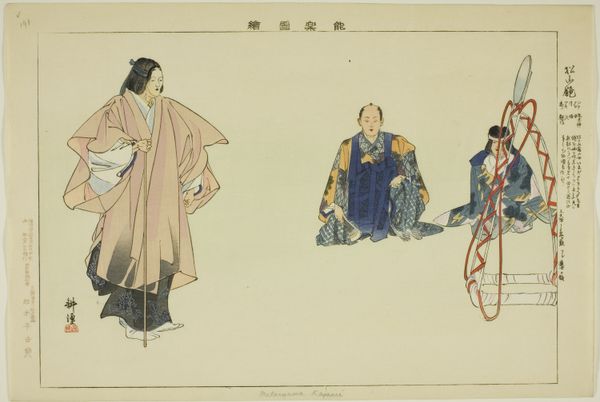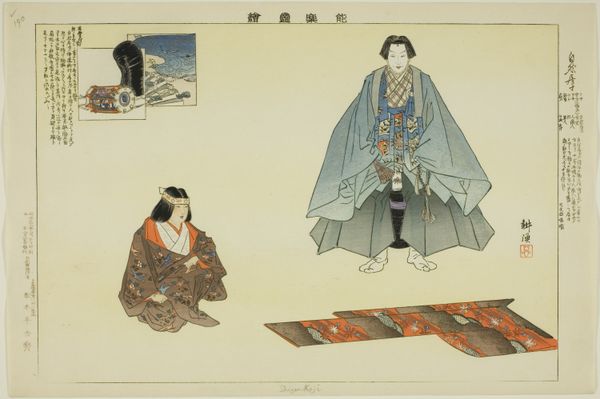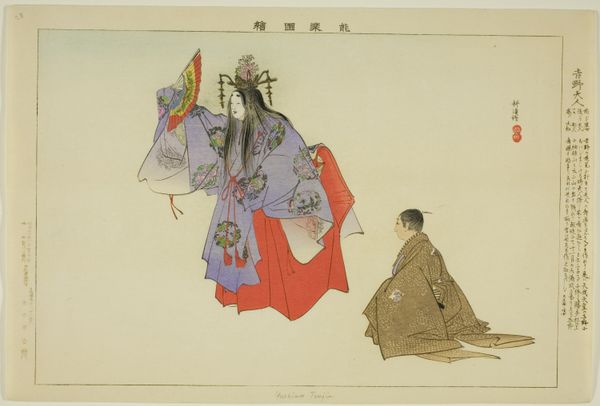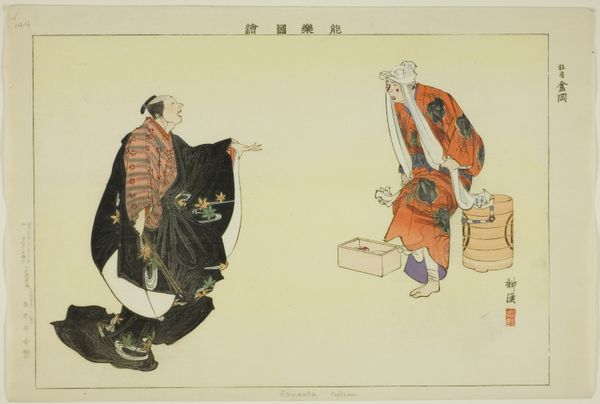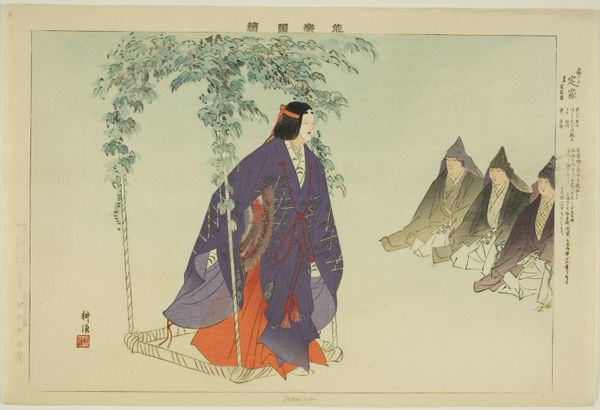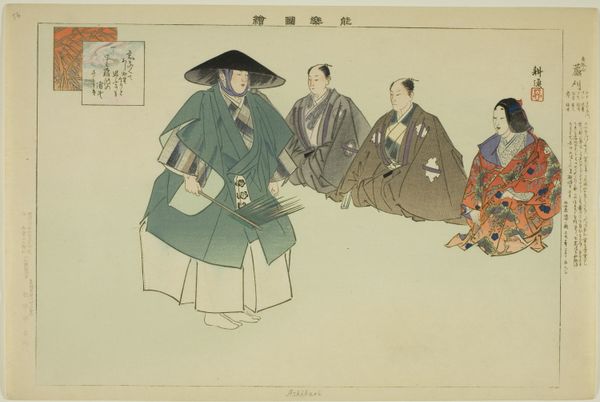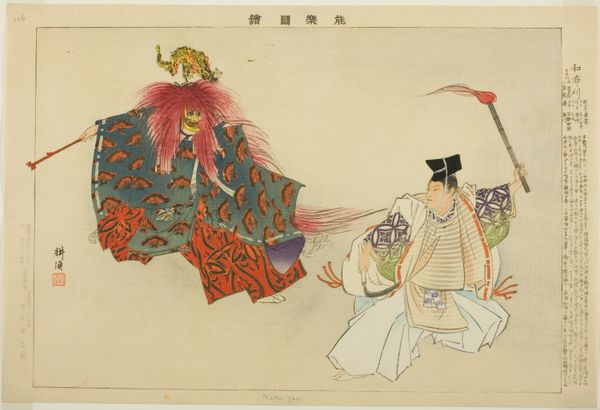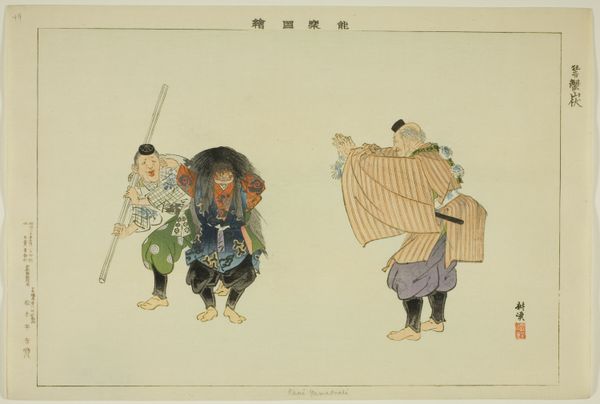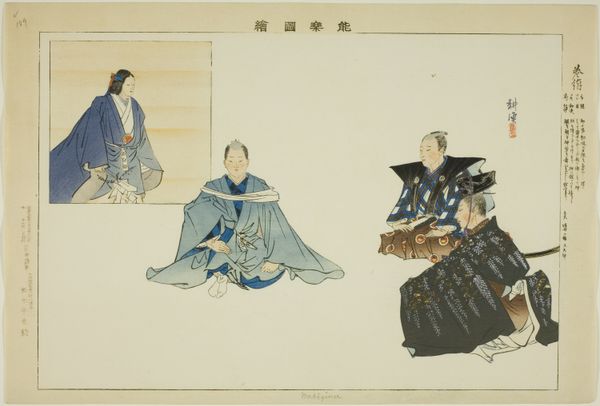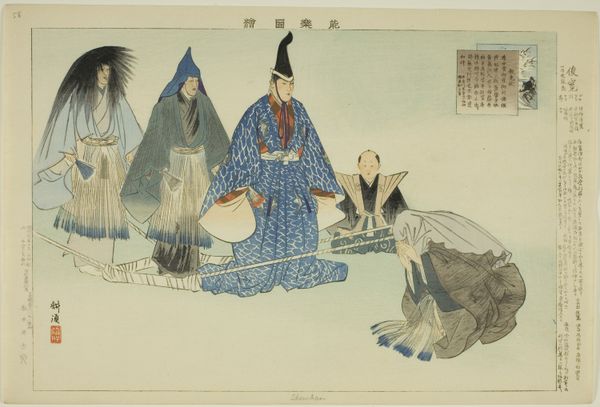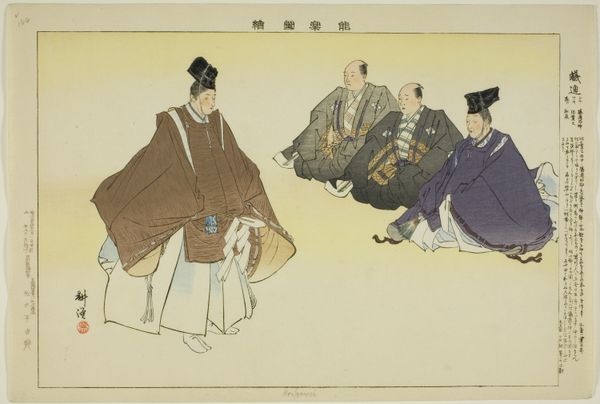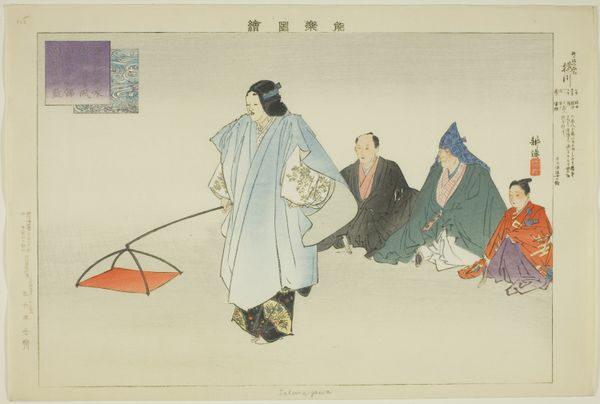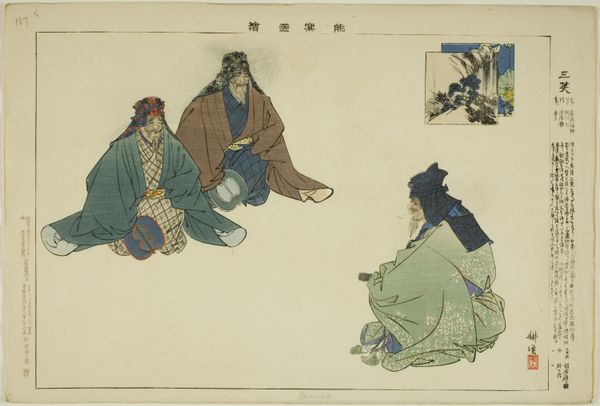
Karukaya, from the series "Pictures of No Performances (Nogaku Zue)" 1898
0:00
0:00
Dimensions: Approx. 25.2 × 37.4 cm (10 × 14 4/3 in.)
Copyright: Public Domain
Editor: This is "Karukaya," a print made in 1898 by Tsukioka Kogyo. The figures, especially the male one, look a bit imposing despite the softness of the printmaking. The cultural context is something I don't fully grasp. What stands out to you about this piece? Curator: I notice how Kogyo appropriates the traditional Ukiyo-e style, typically used for everyday life and landscapes, to represent a scene from Noh theatre. This immediately raises questions about the popularization of elite culture. Noh was, and still is to a degree, reserved for the upper classes. Editor: So, by creating these prints, Kogyo is sort of democratizing Noh? Curator: Precisely. Printmaking made the themes and figures accessible to a broader audience. Think about it: how does depicting theatrical performances, often funded and patronized by the elite, in a mass-producible format shift its cultural significance? Editor: That’s fascinating! So, while the subject matter might represent a certain level of society, the artwork itself is now part of a wider social conversation. Does the visual style, that classic Ukiyo-e, help with the popular appeal, or does it diminish the high-art status of Noh? Curator: I would argue it is a critical tool of popularisation. Consider how audiences already relate to the form. It cleverly rides on an established aesthetic. How can you translate tradition for a new audience and maintain interest? This is how! Editor: It's all so interconnected, the art, the audience, the history... it really does shift the entire meaning of the piece. Thanks for explaining this. Curator: Exactly! Hopefully, this is something listeners find helpful to contemplate further in future viewings of Japanese artworks.
Comments
No comments
Be the first to comment and join the conversation on the ultimate creative platform.
